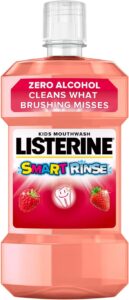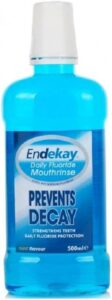What is MIH?
MIH is a dental developmental condition affecting the strength and/or appearance of teeth.
Teeth affected by MIH can have white, cream, yellow or brown patches on them, and they can be unusually shaped. Sometimes the strength of the teeth is unaffected, but other times the changes in appearance can be an indication that the teeth are weak and more susceptible to tooth decay, tooth wear, and sensitivity.
What does MIH stand for?
MIH stands for Molar Incisor Hypomineralisation or Molar Incisor Hypoplasia – both terms are used almost interchangeably. Molar Incisor describes the teeth usually affected – usually the first molar teeth and the incisor teeth. Hypomineralisation describes a reduced mineral content of the teeth while hypoplasia describes a problem in forming the structure of the teeth – both mean the teeth may be weaker than normal.
How do I know if I or my child has MIH?
You (or your child) may notice the usual appearance of the teeth, feel the teeth crumbling away, and/or experience pain or sensitivity. If you’ve not had the teeth checked with a dentist you should book for a checkup (or emergency appointment with severe pain).
MIH is usually diagnosed by your general dentist during a checkup in childhood. The first molars and incisors usually start to erupt at or around age 6. Once these teeth are visible, your dentist may notice the strange appearance and make the diagnosis of MIH.
What causes MIH?
Sometimes cases of MIH can be related to illness or treatment with medicines during pregnancy or as a baby, which affect the development of the incisor and molar teeth already developing at that time. Other times no particular cause can be identified.
How common is MIH
The prevalence of MIH varies in different groups of people. In some groups of people MIH is found as commonly as 1 in 3 children, in other groups its as low as 1 in 28 children.
How is MIH treated?
Usually the first and best treatment for MIH is prevention.
The affected teeth may or may not be weaker than normal, but even if they are weak, it does not mean that they will definitely have problems. In most cases, the same simple preventative advice that dentists give to help everyone avoid tooth decay will still work for patients with MIH.
Prevention
Strictly avoid sugary snacks and drinks between mealtimes. Drink plain still tap water or sugar free still drinks (not be confused with “no added sugar”). For snacks, consider fresh fruit, vegetables, nuts, seeds and legumes.
Brush twice daily with a fluoride toothpaste. If your region does not have water fluoridation then children should use an adult strength toothpaste. If 10 or older, your dentist may prescribe a special high fluoride toothpaste.
Time brushing for 2 minutes – to allow time for the toothpaste to soak into the teeth.
Don’t rinse after brushing – this washes away the toothpaste. Instead just spit out without rinsing.
Use a fluoride mouthwash at two separate times to brushing (from age 6+). Using at different times to brushing provides extra doses of fluoride and avoids washing away the toothpaste after brushing.
Visit the dentist regularly, usually every 3 or 6 months.

Treatment
Not all cases of MIH will require treatment beyond the preventative advice above. Sometimes however, your dentist may recommend one or more of the following treatments:
- Fluoride varnish applications every 3-6 months
- Use of sensitive toothpaste
- Fissure seals
- Fillings
- Crowns
- Extractions
- Referral to a specialist paediatric dentist
Cosmetic Treatment Options
There are some cosmetic treatments available, usually only to adults, which may help improve the appearance of front teeth visibly affected by MIH. Cosmetic treatment options include:
- Tooth whitening can sometimes be successful in brightening affected teeth
- Resin infiltration can sometimes be used to mask patches of discolouration
- Cosmetic fillings/bondings can be used to reshape teeth, cover patches of discolouration, and/or replace weak or damaged enamel and dentine
- Cosmetic veneers can be used to replace the enamel on the front surfaces of affected teeth
- Cosmetic crowns can be used to replace the enamel of the whole tooth (front and back)
Some of these treatment options involve drilling the teeth first, and so are destructive in nature. Some options will last longer than others, and some are more expensive than others. Your dentist will be able to give you more advice and information about which options are suitable for you and the best way to arrange cosmetic treatments.


Leave feedback about the information on this page